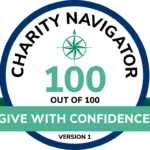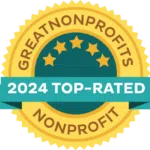By Jen Brea
I’ve spent a lot of time imagining Whitney Dafoe. I’ve looked at as much of his photography and as many photographs of him as I could. I read everything written about him in the public domain. I’ve asked his parents, Stanford geneticist Ron Davis and child psychologist Janet Dafoe, and sister, Ashley Haugen, everything I could think of about Whitney, before, when, and after developing Myalgic Encephalomyelitis / Chronic Fatigue Syndrome (ME / CFS).
I did this because I was curious and because I wanted to imbue the portrayal of Whitney in Unrest with as much humanity and complexity as possible, even though I have never been able to actually meet him. I’ve been to his house multiple times, but my very presence in his room would have been more than he could bear. When we shot at his house, he did once, for a few minutes, bear the presence of our Director of Photography, Sam Heesen, while the rest of the crew waited outside. But like every choice Whitney makes, it came with a price.
In Unrest, we see Whitney and we hear his family talk about him, but we don’t really get to hear about his experience in his own words. To the extent that Whitney speaks in the film it is through his photography which is, perhaps, fitting. Whitney is, in spite of everything this life has stolen from him, an artist.
Our DP Sam later related to me an anecdote about Whitney. When Sam was setting up a shot inside his bedroom, Whitney noticed that a patch of light was streaming through a crack of his blackout curtains and bouncing off his white sheets. Realizing this would “blow out” part of the shot, Whitney pointed at it with his laser pointer. Sam went and drew the curtain tighter across the window. Whitney, as sick as he was, and as hard as shooting was on him, was still a photographer. Hell, if he could, I am sure he would have shot the entire movie. This story impressed upon me an even greater responsibility in terms of how we assembled Unrest in the edit. It also taught me something very important about Whitney. Everything that makes Whitney Whitney is still there. As hard as it is for him to be in or communicate with the world, he still cares as much as I do about achieving the perfect shot!
A few weeks ago, I was in the Palo Alto area for a doctor’s appointment and asked Ron and Janet if they would be up for a visit. I didn’t know that after five years of knowing the family and being allies in this fight, I would finally have the chance to meet Whitney, for real.
Our meeting was the confluence of several lucky events. Many people with ME have some degree of sensory processing difficulties. Like many with autism, they may find it difficult to tolerate light, sound, vibration or touch. Whitney’s sensory processing challenges are especially severe, but the Davis-Dafoes found out several years ago that the seizure drug, Ativan, allows Whitney to temporarily process sensory information in a more manageable way. This meant that while Whitney is on Ativan, he can use a form of signs and gestures to communicate his thoughts and needs, and be signed to in return. I call it WSL: Whitney Sign Language.
Since December, something remarkable has happened. While Whitney still can’t vocalize words, when on Ativan, he can be spoken to. This has made communication much more efficient. He signs and his family or whoever is in the room with him, rather than trying to sign back in WSL (which frankly no one in the world, let alone Whitney, is yet fluent in! It’s a very organic language…), can now verbally guess what he wants to say. It’s an intense game of charades and also a fascinating look at how humans create language. It’s one thing to say “I’m cold” with gestures. Quite another to say thing like, “I think the symptom I am experiencing is a problem with my nervous system, not my cardiovascular system.” Or to express specific, abstract concepts and words like “reticence” or “equanimity,” all of which Whitney is able to do through a unique, personal system of gestures and body language. This another thing I learned about Whitney: he, like many people I know with ME or other disabilities, is incredibly creative.
About an hour into visiting with Ron and Janet on their porch, Whitney gave his sign for wanting Ativan. After the Ativan was administered, he asked if his doctor could come. Janet then told Whitney that I was there and asked if he wanted to meet me. At first the thought of it overwhelmed him. He put his hands over his face. After more of the Ativan kicked in, he said, “Yes,” but indicated that he would need some time. Janet would later tell me this was the first time he had let anyone outside his family, doctors, or our DP enter his room.
Whitney had to prepare himself first, as he does whenever he knows he is about to encounter a new face. Meeting a new person takes cognitive effort and is enough to crash him. This might sound strange if you’re not familiar with ME / CFS but it’s a more extreme version of a symptom I used to have. During a crash, there would be days when I couldn’t make eye contact even with Omar because it was too much to process the visual information of his face and the auditory input of what he was saying to me at the same time.
I put on a black cloak (another strategy to minimize sensory input) and walked into Whitney’s room. As soon as we saw each other, we started crying. His hands were clasped as though in prayer. He would make this gesture many times over the four hours I spent with him. Sometimes it was a gesture of thanks, and other times, a gesture of hoping, wishing, praying. I soon found myself frequently returning this gesture. By the time I left, it came to mean so much more than any words could express: I love you. I am here for you. I am grateful for you. I am fighting for you. We are all in this together.
The longer I spent, the better I got at guessing what Whitney was saying. I love learning new languages and I liked the idea of becoming fluent in WSL. I also started to realize I really like Whitney. We should hang out! We should be friends. But every time Ativan opens up Whitney’s world and possibilities, the effort he exerts to communicate, to be Whitney, extracts an incalculable cost. He crashes for days, weeks. He pays a price harder than I have ever had to pay, and I have had to pay hard. He says his brain shrinks back into that 1/4 inch space where it is struggle just to have a thought. So, he only asks for Ativan perhaps once every two months. Until Whitney finds an effective treatment or cure, I may never happen to visit the Davis-Dafoes again on a day when Whitney has taken Ativan. It may be years before I get to converse again in WSL.
I don’t think I ever really understood the concept of a moment being rare or precious until I met Whitney last month.
Whitney is a phenomenal storyteller. He has a rich and slightly wicked sense of humor, and is just a wonderful, clever human. He told stories about his travels in India, about motorcycling in the mountains, about the one time he was in a car so small, he was literally sitting on the driver’s lap. I would laugh and his face would light up. He’d try very hard not to laugh, too, knowing it would crash him. Everything that Whitney is is still there, and most days, it stays locked inside a mind, inside a skull, inside a body, inside a bedroom, inside a house, waiting to be set free. And at this point in our society, at peak American wealth, with a National Institutes of Health budget of $34.4 billion and a federal budget of $4 trillion, with 6.9 million scientists & engineers and 1.1 million physicians, we have knowledge enough, training enough, technology enough, methods enough, money enough to pull this off, quickly. What we don’t have (yet) is the will, and that is criminal.
Whitney had two things he emphatically wanted me to tell everyone in our community:
- Stop calling it an invisible disease! Whitney says this is bad PR. “I’m right here. I have been right here this whole time and I am not invisible,” he said.
- “Don’t give up. Don’t give up, don’t give up, don’t give up.” I imagine Whitney has told himself this many times over the years. I am sure he has imagined all the countless millions around the world living in similar circumstances. He keeps fighting everyday, not giving up, for himself, for his family, but also for all of us.
I don’t know if Whitney was an activist before he got sick, but he is absolutely one now. His will to survive and his commitment to use his voice in any and every way that he can (participating in Forgotten Plague, Unrest, The Washington Post, and a forthcoming book) is a great act of resistance, one each and every one of us can engage in, with whatever voice or platform we have. That is the very heart and spirit of #MillionsMissing. Even when this disease literally stills our voices, WE ARE NOT INVISIBLE. WE WILL NOT BE SILENT.
I left knowing that when Whitney gets better, we’ll be friends. Correction: I want to be his friend. I can’t speak for Whitney. He’s awesome and funny and I want so badly for him to be an active and integrated part of our community. He will have so much to say and share with the world, whether using WSL, his voice, or his art.
Just a few weeks ago, his dad’s lab published in the Proceedings of the National Academy of Sciences a groundbreaking study and potential new laboratory test to diagnose ME / CFS.
I believe that day is coming. It can’t come fast enough.
If you read this piece and found it moving, I am sure Whitney would love nothing more than for you to support his dad’s work. You can do this by making a donation to the Open Medicine Foundation. You can also think about how you can carry Whitney’s spirit forward this #MillionsMissing by sharing your own story or supporting someone you know with ME.


